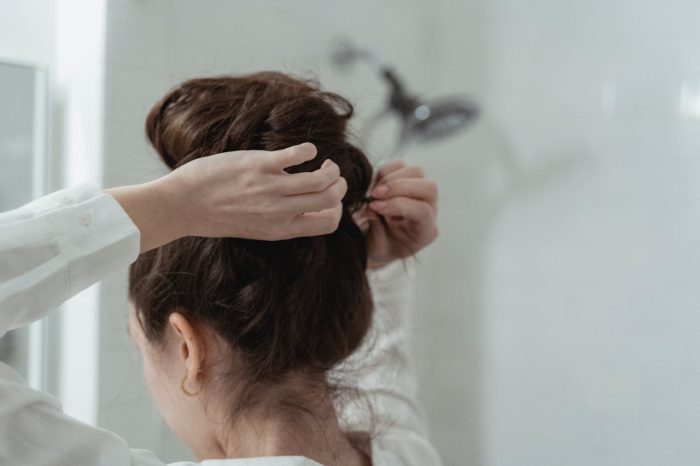{*Did you know you can write on Elephant? Here’s how—big changes: How to Write & Make Money or at least Be of Benefit on Elephant. ~ Waylon}
When it comes to music, I always thought the older the better.
I swear by this since I was a high schooler, just starting to explore the world. Especially after moving in with my aunt who just lost her husband at the time, and to distract herself, she jumped into introducing a whole spectrum of things I didn’t know existed, from taking me to catchy Jewish concerts, to the trippy 60s music to new mindsets and beauty products.
As I grew through life, I expanded this idea of almost every area of my life, including my beauty routine. So it shouldn’t come as a surprise that what worked for me the best was to follow the teachings of the 3,000-year-old “science of life”: Ayurveda.
Chances are, if you are reading this, you already have some idea about this ancient Indian science, where the pursuit of holistic well-being extends beyond physical health to encompass mental, emotional, and spiritual harmony. So allow me to skip the introduction of Ayurveda; you can google it for yourself. I am here to talk about something more specific within Ayurvedic science.
The first step in applying Ayurvedic principles on our life is by defining our dominant dosha. I am Pitta dominant, which is one of the three ayurvedic doshas or mind-body types. The doshas are made up of unique combinations of the five elements: Kapha is water and earth, Vata is air and space, while Pitta is fire and water. The three doshas are present in all of us in different proportions regardless which dosha is dominant. The elements increase or decrease in the body through diet or lifestyle, causing changes and imbalances. The goal is to keep the doshas in balance, which we have some control over.
Pitta is considered to govern the health of skin and hair and where there’s excess of Pitta energies, skin health can be affected, and there is a tendency for early greying of the hair and premature hair loss as well. Healthy hair is not only for aesthetic purposes; in Ayurveda, it’s also a reflection of one’s inner vitality.
As for me, when my Pitta is aggravated, it clearly shows in skin problems and loss of hair. Not only then but every end of the winter, when spring arrives, much of my hair falls out and their ends split. The changes in environment—weather, temperature, food, and so on—take a toll on my scalp and can lead to inflammation in the hair follicles. And so, I spent way too much money, time, and energy on finding hair products and treatments to fix this. Nothing helped until I reached for Ayurvedic aids.
First thing first, I had to learn how to wash my hair properly—or rather, to not wash it at all. I mean, I wash my hair at least once a week (in summer, because I work outside in the forest I might wash it more often with water to get the sweat out), but the point here was to stop shampooing my hair and start to clean my scalp because the dirt and access grease is all on the scalp, not on the hair. So now when I wash my scalp I focus on really cleaning my skin twice and let the foamy water rinse over my hair.
I also invested in a professional shampoo and stopped buying cheap shampoos that are accessible in drug stores and supermarkets because they don’t do much good for my hair. I use the products of Moroccanoil depending on what my hair needs at the moment, like repairing or hydration, and so on. Don’t worry for the price since you won’t be using it so often you don’t use it up so fast either. I use up a bottle of their shampoo in six months. But if you don’t want to use expensive shampoo, aim for natural products that help maintain the hair’s pH balance.
I got into the practice of regularly oiling my hair and scalp to balance and calm down the excessive Pitta. According to Ayurveda, oiling can be effective for hair loss because it has water and earth elements in it that are both cooling and strengthening for the hair. I oil my hair using warm oil, often with herbs, once a week during summer and twice a week during winter, as my scalp tends to get drier in cold weather, which can cause more inflammation. When I apply oil on my hair I link it with another Ayurvedic practice called Abhyanga, or self-massage. Regular scalp massages stimulate blood circulation, relax the mind, and fortify the hair roots. For Vata dosha, sesame and almond oil is recommended, Pitta benefits from Aloe Vera and Sandalwood, while herbs like fenugreek and eucaliptus aids Kaphas.
In Ayurveda, a balanced diet is the base of everything, so naturally I started to pay more attention to what I eat for the sake of my hair too. Foods whole grains, fresh fruits, vegetables, lean protein, and healthy fats nourish the hair follicles too and promote hair growth. Ashwagandha, an adaptogenic herb, restores hormonal balance, aiding in hair fall prevention. Also pay attention to your iron, biotin, antioxidants, collagen, and zinc intake. Sadly for me, Ayurveda advises to avoid spicy food such as red and green chilies, jalapeños, and hot sauces, which can exacerbate the body’s Pitta.
As with every lifestyle change, when applying Ayurvedic principles in our lives, results may take time, but the holistic benefits extend beyond hair health to overall wellness. So it’s a win-win in every way. For me, it took about two months to start to see notable differences.
~
{Please consider Boosting our authors’ articles in their first week to help them win Elephant’s Ecosystem so they can get paid and write more.}












Read 5 comments and reply